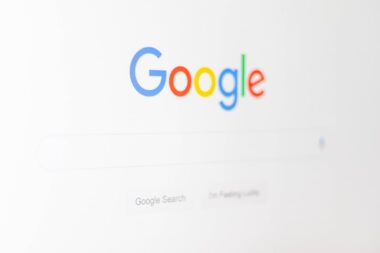Google created the online advertising platform known as Google Ads, formerly known as Google AdWords. It enables companies to make and publish advertisements for the Google Display Network as well as for Google’s search engine results pages. Users of Google AdWords bid on keywords and pay for each click on their advertisements under the pay-per-click model.
Key Takeaways
- Google Ads is an online advertising platform that allows businesses to display their ads on Google’s search results and other platforms.
- Setting up a Google Ads campaign involves creating a campaign, ad groups, and ads, as well as selecting keywords and setting a budget.
- Targeting the right audience is crucial for the success of a Google Ads campaign, and it can be done based on demographics, interests, and behaviors.
- Creating compelling ad copy involves using relevant keywords, a clear call to action, and highlighting unique selling points to attract potential customers.
- Optimizing landing pages is important to ensure that visitors have a seamless experience and are more likely to convert into customers.
For companies trying to boost their online presence and increase website traffic, this platform is a vital resource. A range of ad formats are available through Google Ads, such as text, display, video, & app promotion ads. These advertisements may show up in YouTube videos, mobile apps, Google search results, & websites that are part of the Google Display Network. Google Ads gives businesses an effective way to reach their target audience and increase conversions by allowing them to target specific keywords, demographics, and geographic areas.
For businesses hoping to make the most of this platform, it is imperative that they grasp the fundamentals of Google Ads. Businesses can create profitable advertising campaigns by being knowledgeable about the various ad formats, targeting options, and bidding strategies. There are several crucial steps that must be taken in order to successfully set up a Google Ads campaign. Making an account on Google Ads and configuring billing details is the first step.
Businesses can start constructing their first campaign as soon as the account is set up. In addition to defining campaign goals & targeting options, this entails selecting the campaign type (such as search, display, video, or app promotion). Within their campaigns, companies must then establish ad groups. Ad groups are used to group keywords and ads together according to a common theme.
A company that sells athletic shoes, for instance, might make ad groups for soccer cleats, basketball shoes, and running shoes. Businesses can create ads & choose relevant keywords to target within each ad group. Businesses must write persuasive ad copy to entice users to click on their ads after creating ad groups. This entails creating compelling ad copy and attention-grabbing headlines that express the value proposition of the good or service being promoted.
Businesses must next decide on a campaign budget and bid prices for their keywords. Budgets can be established at the campaign level to limit spending, and bids can be placed manually or automatically. After all the setup is complete, companies can start running their campaigns & tracking results. The capability of Google Ads to precisely target particular audiences is one of its main advantages.
Users can be targeted by businesses according to their demographics, interests, habits, & locations. In doing so, they are able to connect with prospective clients who are most likely to be interested in their offerings. Businesses should take the time to thoroughly investigate and comprehend their target market before using Google AdWords for audience targeting. This entails determining the attributes, including age, gender, income bracket, and hobbies, of their ideal clients.
Businesses can create more effective and relevant advertising campaigns that resonate with potential customers by having a clear understanding of their target audience. Businesses can reach consumers who are actively looking for goods or services related to their industry by using keyword targeting in addition to demographic targeting. Businesses can guarantee the appearance of their ads when users search for particular terms associated with their offerings by placing bids on pertinent keywords. Businesses can increase the efficacy of their advertising campaigns & boost return on investment by using Google Ads to target the appropriate audience. By using a targeted approach, businesses can send the right message to the right audience at the right moment, increasing the chance that they will convert leads into sales. To draw in potential clients and encourage clicks on Google Ads, one must write enticing ad copy.
Calls to Action
Strong calls to action that motivate viewers to complete the desired action, like making a purchase or completing a form, are essential components of effective advertising copy. Clear, succinct, and persuasive copy should also have these qualities. Businesses should emphasize the distinctive selling features of their goods or services in their Google AdWords ad copy.
This could involve elements like cost, value, accessibility, or exclusive deals. Businesses can stand out from the competition and draw in new clients by outlining the value proposition of their products and services in clear terms. Apart from emphasizing the advantages of their products, companies ought to think about employing ad extensions to furnish users with extra details. Businesses can provide users more ways to interact with their brand by including phone numbers, additional links, or location data in their ads through ad extensions.
Lastly, companies should experiment with various ad copy iterations to determine which works best. Businesses can determine which messaging most resonates with their target audience and optimize their ad copy for maximum effectiveness by conducting A/B tests with various headlines, ad text, and calls to action. Users are taken to a landing page where they can find out more information about the good or service being advertised after clicking on a Google Ad.
Track Conversions
In order to turn clicks into leads or sales, landing page optimization is vital. A landing page that has been optimized should make sense in relation to the advertisement that users clicked on and offer a direct route to the action they want to take. This can entail giving the product or service being offered compelling information and putting a clear call to action button, like “Buy Now” or “Sign Up.”. You should design landing pages with usability and conversion optimization in mind, in addition to relevance and clarity. This entails making certain that the website loads rapidly, is simple to use, and offers a consistent user experience across various devices.
A/B testing is another strategy that businesses should think about utilizing to maximize the efficacy of their landing pages. Through experimentation with various components like headlines, images, and calls to action, companies can determine which iterations yield the best conversion rates and utilize this information to inform data-driven decisions regarding landing page optimization. Businesses can increase the return on investment from their Google Ads campaigns and convert clicks into qualified leads or sales by optimizing landing pages for relevance, clarity, usability, & conversion optimization. After a Google Ads campaign is launched, it is critical for companies to track its effectiveness and evaluate important data to determine how well it is working. This entails monitoring data like cost per click (CPC), conversion rate, click-through rate (CTR), and return on ad spend (ROAS). Businesses can pinpoint areas for development and make data-driven decisions about how to best optimize their campaigns for improved outcomes by routinely monitoring these metrics.
Businesses can improve the effectiveness of an advertisement by making changes to its targeting or ad copy, for instance, if it is not converting as well as it should in terms of CTR. Businesses should evaluate total campaign performance in addition to tracking individual ad performance to determine which campaigns are producing the best outcomes. To determine which tactics are most successful at reaching the target audience and generating conversions, this may entail comparing performance across various campaign types or targeting options. Businesses can continuously optimize their Google Ads campaigns for better results and make sure they are getting the most out of their advertising budget by continuously monitoring and analyzing performance. Companies may want to think about growing their efforts to reach a wider audience and increase conversions as they gain experience with Google Ads and begin to see positive results from their campaigns. Raising funds, trying out new techniques to reach prospective clients, and broadening targeting options are all part of scaling a Google AdWords campaign.
Increasing the targeting options available to reach new audiences is one method of scaling a Google Ads campaign. Among other things, this can entail focusing on previously untapped markets or groups of people who could represent new business opportunities. A Google Ads campaign can also be scaled by raising budgets in order to reach more users. Businesses can expand their reach and improve website traffic by investing more money in high-performing campaigns or targeting choices. Finally, by experimenting with different tactics & ad formats, companies can grow their Google Ads campaigns. This could entail evaluating various bidding techniques to maximize campaign performance or experimenting with new ad formats like responsive display ads or video ads.
Enterprises can enhance their online visibility and increase conversions from their advertising endeavors by systematically and tactically expanding their Google Ads campaigns. As a result, they can optimize the results of their advertising expenditure & establish long-term, steady growth.
Looking to boost your business’s online presence in NYC? Check out this insightful article on how SEO agencies can help NYC businesses thrive in the digital landscape. From navigating the concrete jungle online to finding the best SEO agency for your needs, this article provides valuable insights and tips for leveraging the expertise of SEO agencies in NYC. Learn more about how these agencies can elevate your business’s visibility and drive growth. Read more


